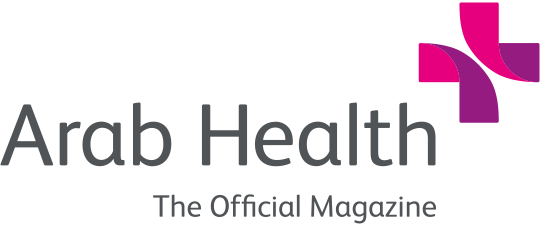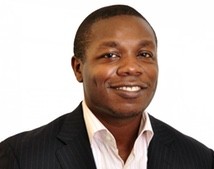Accelerating Growth In The Healthcare Sector With Stronger Procurement Practices
Sam Achampong, Regional Director, Chartered Institute of Procurement & Supply (CIPS) Gaynor Anderson, Director of Supply Chain at National Ambulance LLC Abu Dhabi David McNamara, Director of Logistics at Cleveland Clinic Abu Dhabi, 16 March 2017
The healthcare industry in the UAE is rapidly growing as the government places the national healthcare system at high priority and aims to have one of the strongest healthcare systems in the world in line with the National Agenda and 2021 Visions. The industry has grown from seven hospitals and 12 health centers in 1971 to 70 public and private hospitals and 150 medical facilities in 2016, and according to Alpen Capital, is expected to grow at an average annual rate of 12.7% over the next four years reaching USD19 billion.
For suppliers and buyers, Gaynor Anderson, Director of Supply Chain at National Ambulance LLC Abu Dhabi, says that this is good news, as it brings the opportunity for greater stability to the health supply chain by opening up the market to manufacturers and Third Party Logistics (3PL) providers.
Despite the growing supply of medical facilities however, UAE healthcare costs remain among the highest in the GCC region which could potentially threaten the speed at which the sector is growing. Sam Achampong, Regional Director, Chartered Institute of Procurement & Supply (CIPS) MENA, highlights that the high costs involved in the UAE healthcare practice can be significantly reduced by building the capabilities of procurement teams and strengthening buying power through a centralized procurement system.
Cost drivers in the healthcare system
The cost of healthcare in a nation heavily depends on income levels, employee insurance packages, population growth, local factors including social, political and environmental issues, and the health problems relevant to each country. In the case of the UAE, these health problems would be diabetes and heart-related illnesses among others.
Another driver of the high medical costs in the UAE is the need for hospitals to reimburse overhead costs related to the over-prescription of services and treatment passed on to health insurers. “Many healthcare practitioners go beyond the necessary diagnostics and treatment steps under the belief that the costs will be covered by insurance and will improve the institution’s revenue. What is not taken into consideration however, is the costs that this will bear the institute in terms of overhead reimbursements. These also drive the cost of health insurance policies up,” said Anderson.
David McNamara, Director of Logistics at Cleveland Clinic Abu Dhabi, adds that the high cost of healthcare in the region is mainly because medicine is new to this part of the world: “It is quite simple, the procedures carried out in the region are new, previously people travelled abroad for elective and in some cases non-elective surgery. Today we see state of the art hospitals in the region providing the most up to date procedures but at low volumes because we do not have the skilled surgeons to carry out the high tech surgeries.” Therefore, in addition to the high costs of purchasing such technologically advanced equipment, the cost of qualified staff who can use this equipment is very high, further adding to healthcare insurance premiums.
Fraud also contributes significantly to costs in healthcare making it important for procurement professionals to ensure high levels of transparency in procurement processes that will help eradicate corruption, and with VAT on the horizon, Anderson adds that managing costs will be challenging as the implementation is not yet fully understood. Also taking into consideration the ongoing subsidy phase out, medical institutions will need to be cautious when planning 2018 budgets.
These costs, to some extent, can be moderated through more effective and efficient procurement and supply practices at a national level.
Challenges faced by procurement professionals in healthcare
Compliance to local standards and regulation is especially vital in the healthcare sector of any country for clinical and operational effectives, as well as for accreditation purposes however, because most medical products are imported in the UAE, the supply chain is often long and fragmented making it difficult for procurement professionals to track. Anderson provides one way in which this creates a barrier for procurement professionals: “the Joint Commission International (JCI) is an important certification for healthcare providers and helps to achieve a Gold Seal of Approval, however finding suppliers who meet the JCI and ISO standards is difficult when supply chains are not easily trackable. This makes it difficult for institutions to qualify for international accreditations despite the quality of services they provide.”
Further complicating the supply chain in the UAE healthcare sector is that manufacturers often have different agents limited by specific geographic boundaries within the UAE, limiting timely servicing including warranties, restocking consumables and replacement parts which result in short supply and ineffective procurement processes.
From a procurement point of view, Achampong stresses that procurement professionals in the healthcare sector often lack deep medical understanding which can result in a gap between what doctors want from the growing number of new advancements in the medical industry and what is really needed by the patients of an institution. It is therefore the responsibility of procurement professionals to work very closely with practitioners to understand how requirements can help the institute’s offerings and whether the costs can be justified by the need. Doing this will help reduce the gap between the supply and demand making more efficient use of institutional budgets and eliminating unnecessary costs that contribute to health insurance premiums.
Preparing procurement professionals to drive growth in local medical institutions
At an institutional level, it is important for procurement professionals to gain a better understanding of how to maximize the use of procurement budgets. Certified training courses and accredited qualifications can help develop skills and build awareness of compliance, sustainability, ethics and supply chain resilience. According to Achampong, such skills will aid institutions in cutting costs and applying for international accreditations. This will result in reduced health insurance premiums, a boost in patient confidence and better service for customers raising the nation’s healthcare industry at a global level.
In the UAE and wider Middle East region, CIPS helps to drive cohesion and accelerate the development of commercial expertise in the healthcare sector. Anderson testifies: “as a body, CIPS has the potential to create change by bringing together, supporting and training procurement professionals in the sector through sustainable capability building.”
McNamara added: “Procurement is possibly the biggest cost in the provision of healthcare and education is critical to cost savings. CIPS can lead and guide procurement professionals in the region, and educate them to realise that just because they have access to a substantial amount of money, they are not obliged to spend it all. Building the basics of procurement through education will allow us to be efficient and economical with our money”.
According to Achampong, a strong and efficient procurement team can help bring down costs for medical institutions through streamlined processes and a better understanding of purchases that will facilitate more effective operations. This will result in lower costs pushed down to insurance providers and therefore reduced premiums for patients and more room for advancements in the field. A well trained-team will also be able to better identify suitable suppliers to ensure compliance with local and international standards and increase eligibility for accreditation. However, more can be done from a regional standpoint to increase collaboration and boost buying power in the face of international medical providers.
Streamlining the procurement system to bring down costs
The growth of the healthcare industry in the region has been hindered to a significant extent due to a lack in collaboration from suppliers and medical institutions. McNamara stresses the benefits of synergy through procurement and contracts as well as shared services is enormous: “Medical buyers tend to source basic products through multiple outlets and channels which were shipped through the same shipping lanes and at times even through the same local distributor. This could be established in a much more efficient way with a centralized procurement process in the GCC through sharing knowledge, contracts, prices, warehouses etc. With skilled negotiators in place, the pressure as a group on vendors can reduce costs for institutions through bulk buying which will reflect in lower health insurance premiums for patients.”
He adds that because the UAE does not have access to skilled surgeons who are able to carry out advanced medical procedures, the spending power to demand low prices from medical technology vendors is reduced however, collaboration in purchasing within the region could put the industry in a better position to drive costs down. “Suppliers and distributors tend to be monopolies in the region and therefore we are at their mercy. As a group, we need to work together on the principal to reduce prices,” he said.
Achampong added, “Collaboration at a national level can help to identify where margins lie within a supply chain, can put pressure on suppliers to reduce costs and can ensure suppliers conform to quality standards. A national collaboration can also make the procurement process simpler hence cutting the delivery and servicing times. This will ensure that patients receive high-quality treatment at a standardized cost in a more effective and efficient process”.


